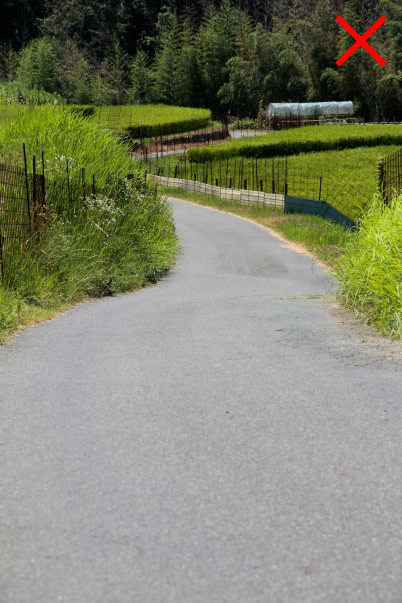Professional Composition Techniques (2): “Pattern & Rhythm” & “S-Curve”
Learn how to make your shots even more compelling and interesting using these techniques from a professional photographer. In this second article in the series, we look at the concepts of “pattern & rhythm” and “S-curve”. (Reported by: Tatsuya Tanaka)

Pattern & rhythm: Using repeated elements to create eye-catching pictures

Rhythm and patterns are all around you!
If you look around you, you will find patterns in lines, shapes and even colours. You can see them in trees planted neatly by the roadside, in the bricks on the walls, or in the tiles on a stone pavement.
Examples of patterns






When you see such patterns, pay attention to their structure and harmony. What are the elements that make up the pattern? How do they come together?
That will help you to create a compelling picture.
Rhythm: Changes depending on how repeated elements are arranged
As long as elements are repeated, there will be some form of rhythm, Take a look at the following:
Random placement


The above image is of straw bundles randomly placed in the field. Despite the random placement, there is still some kind of regularity giving rhythm to the photo.
Even placement


Here, the same sets of straws were placed in a more predictable layout. This results in a different rhythm, and the resulting image also has a different feel.
Find out more about how to use patterns in the following:
How to Take Prettier Photos for Instagram
Abstract Photography: Turning to Nature for Props
How To Use Lines or Patterns in Photography
S-curve composition: Another way to add depth and perspective to your photos

The curved lines in an S-curve composition add a sense of movement to an otherwise-static image. In some cases, they can even add visual depth and perspective to the shot.
How to create an S-curve composition?
Look for elements that resemble the alphabet ‘S’. You can find them in meandering rivers, winding roads, or even in ivy growing on trees.
i) The S-curve can add depth to an image



In the image marked "X", the curve appears too gentle. To achieve the successful image on top, I shifted my shooting position and camera angle to make the ‘S’ shape of the path more obvious (3rd image). Notice how this also gives the image more depth.
ii) Make sure the 'S' shape is clean



While the image marked "X" has an S-curve, the 'S' shape is not very clean: Notice how the water forks out in the middle, making the composition look sloppy. The top image captures a clean S-curve with no distractions, and the composition looks neater as a result.
Tip: A composition that features just a winding road or river alone can look boring. Make it even better by adding visual interest, such as a car or some trees.
The S-curve composition is not just for landscapes and street photos!
It makes for interesting product photography too, especially when you have a number of small items. Simply arrange the items and create the S-shape, like in the example below.



In the first image, the items were arranged according to size. However, the composition lacks structure and looks sloppy. Rearranging them into an S-shape (second image) neatened the shot and gave the image a sense of rhythm.
Final tip: Combine with another composition technique for better results!
While the S-curve composition alone is capable of bringing out depth and perspective, you can achieve an even better effect by combining it with the diagonal or split composition.
Check out Part 1 to learn about the concepts of visual guidance, unexpectedness and subtraction.
Receive the latest update on photography news, tips and tricks.
Be part of the SNAPSHOT Community.
Sign Up Now!About the Author
A monthly magazine that believes that enjoyment of photography will increase the more one learns about camera functions. It delivers news on the latest cameras and features and regularly introduces various photography techniques.
Published by Impress Corporation
Born in 1956, Tanaka is one of the rare photographers who produce works across a wide variety of genres from an original perspective. These genres range from objects in our daily lives, such as insects and flowers, to landscapes, skyscapes, and celestial bodies. Besides photography, Tanaka has also developed his own approach in post processes including retouch and printing.

































